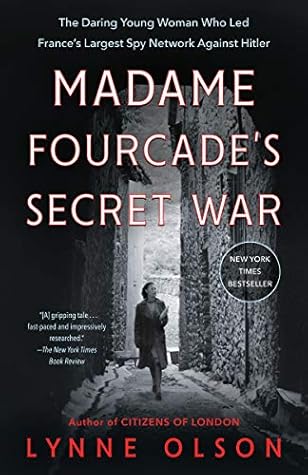More on this book
Community
Kindle Notes & Highlights
by
Lynne Olson
Read between
April 29 - May 5, 2020
“It was a moral obligation to do what you are capable of doing. It was a must. How could you not do it?”
Since the 1920s, the Soviets had secretly provided Germany with facilities deep within their country for the making and testing of tanks, aircraft, and poison gas and for the training of Luftwaffe pilots and Wehrmacht troops—all activities that had been prohibited by the Versailles Treaty.
With the Germans closing in on the capital, the French government had decamped six days before, sneaking out in the middle of the night without making any arrangements for the evacuation or defense of the city.
Overall, more than six million French citizens, resembling “an anthill that had been knocked over,” flooded south—the largest single movement of people in Europe since the Dark Ages.
In early July 1940, less than a month after France’s capitulation, Vichy began enforcing anti-Semitic measures in its territory without receiving orders from Berlin to do so.
the Poles in 1934 became the first to crack the Enigma code.
On July 3, 1940, the British navy, under Winston Churchill’s orders, had destroyed much of the French fleet, then based in North Africa, to keep it out of German hands. In a matter of minutes, British shells had blown up the battleship Bretagne and destroyed or badly damaged several other ships. During the bombardment, more than twelve hundred sailors were killed.
“Collaboration was not a German demand…[it] was a French proposal.”
Britain relied on imports for seventy percent of its food supply; if those shipments were cut off, its citizens would starve.
“to find myself in a job where I could make an operational contribution to the war without killing people. It was also much more satisfying to carry people than bombs—especially
the French “have a hard time taking security measures seriously because they interfere with their social habits and natural garrulousness.”
“For a clandestine network to work well, one must understand that two agents are weaker than one, three are weaker than two, four are weaker than three,” she told an interviewer after the war. “Each one that you take on is an additional security risk, an additional person who can betray you all.”
To some people, particularly those from Paris or Marseille, Lyon seemed more Swiss than French in its outlook. One observer described it as “a citadel of old money that was never flaunted.” But there was another Lyon, one that boasted a tradition of sedition and insurrection.
Lyon became known as the capital of the French underground because so many resistance leaders congregated there.
The first priority of those still free must be to concentrate on their intelligence work and avoid getting caught.
Of the more than 8,500 V-1s fired at London, fewer than thirty percent overall reached their targets. By August, less than one bomb in seven—about fifteen percent—got through to the London metropolitan area.
Without the delays caused by the Peenemünde raid, the rockets would have been fired months earlier and from shorter ranges. “Although we could do little against the rocket once it was launched,” Churchill observed, “we postponed and substantially reduced the weight of the onslaught.”
“After the war, those who had done least in the resistance often spoke the most, while those who had done the most spoke the least.” Women, Gildea added, “were particularly modest.”


